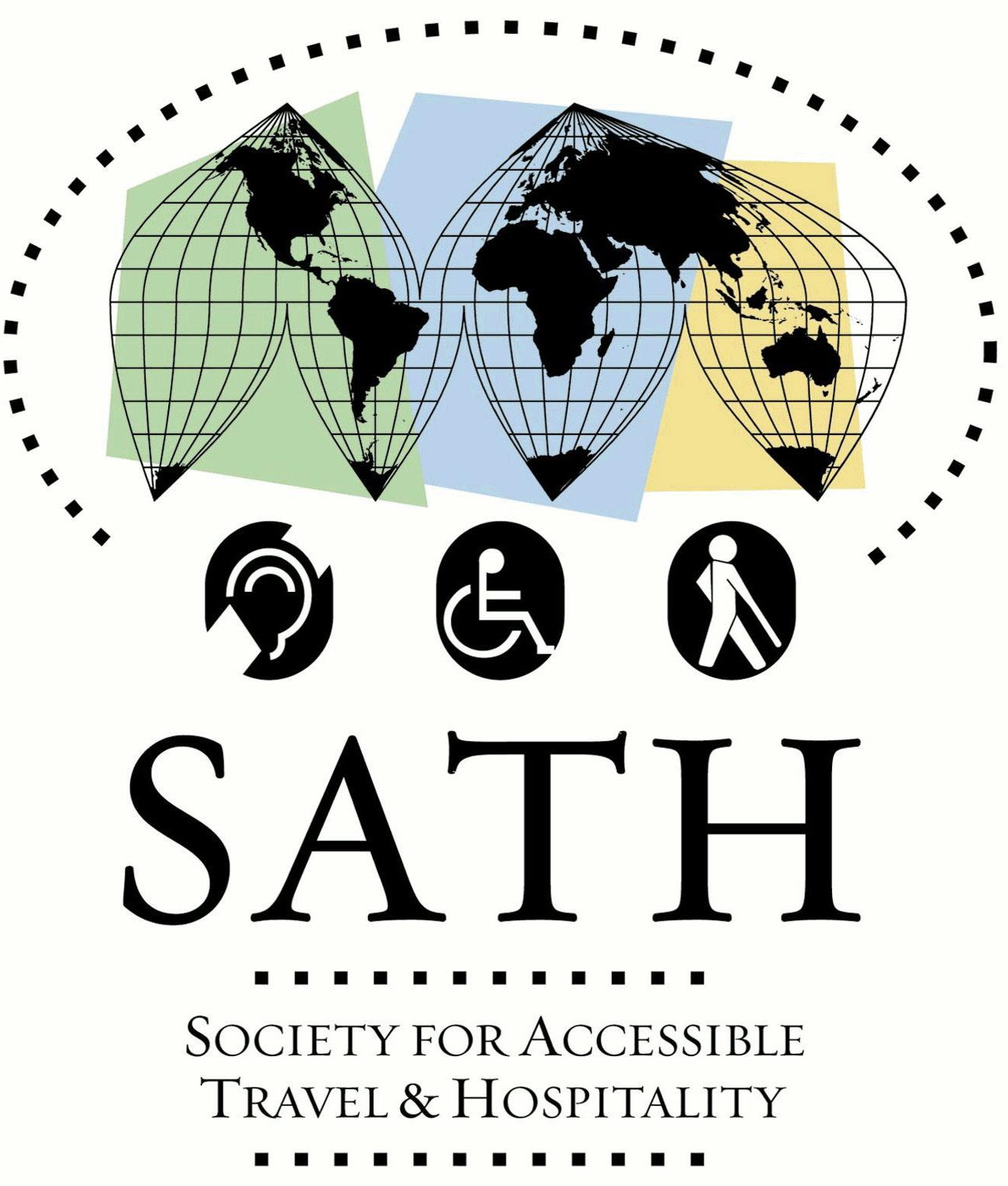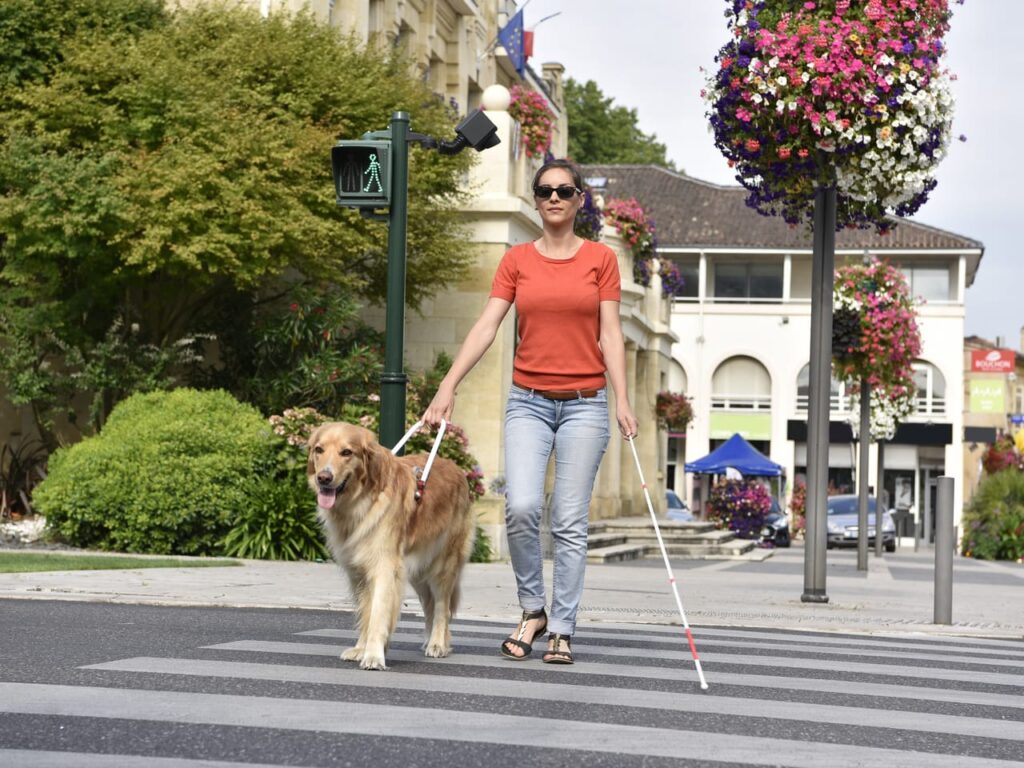Information for People who are Blind or who have a Sight Impairment
There are many opportunities for people who are sight impaired who wish to travel, however the number of companies which operate specific programs for such people have recently fallen considerably due to the fact that several companies have closed for one reason or another and others have found that ihere is an inadequate number of such travelers to warrent operating special programs.
Since the Americans with Disabilities Act (ADA) became law it is illegal for tour operators to refuse anyone the right to join any tour. This includes people withsight impairments who can move aropund unaided. However, for people who would prefer to join a tour where they feel more secure there are tour operators who operate tours for what are known as “slow walkers”, namely people who have physical mobility problems. Since such tours have longer stops than other tours they give a person who has some vision the opportunity to enjoy visits in a more leisurely manner.
TRANSPORTATION
Air: If you wish to travel by air you should notify your travel agent at the time of booking a flight of your disability and see that the informatiuon is included in your flight booking. This will ensure that the airline is able to offer you the services you need such as pre-boarding, a guided tour of the aircraft and large type menus for meals. Your right to travel is protected by the Air Carrier Access Act regulations if it is an american carrier by Resolution 700 if it is a foreign IATA airline. If you have a probleiil, you should request to speak to the Complaints Resolution Officer of the airline who must be available at all times.
Rail: In the United States and Canada you can ask the assistance of the rail company in boarding the train and finding your seat. Give a reasonable amount of time to ensure that there is someone available. The same will normally apply in Europe and other countries which operate modern rail systems.
Bus: In North America, Greyhound Bus is the only company operating a nationwide city to city service and they will give you every assistance in boarding, announcing your destination, and any other help you may need. Since U.S. inter-city bus companies are covered by the requirements of the ADA ,they will also assist you as needed.
Hotels: Most hotels to-day can provide special alarm and security services and many have captioned Television services. When booking you should request that such services are provided.
Blind and sight-impaired travelers are free to travel where they wish and when they wish on any form of public transportation. No company involved with carrying paying passengers in the U.S. and Canada and most other countries can restrict their right to travel or can make rules as to where they can sit.
However, blind passengers should be considerate of the needs of other passengers and where possible take an inside or window seat so that their cane, if it is not a collapsible one, can be stored against the cabin wall or, if they are accompanied by a guide dog, the dog can lie at their feet without causing an obstruction to other passengers leaving their seats. On most planes a bullkhead seat will give a dog more room to stretch out.These days since airlines need a person capable of opening the door in case of emergencies, this facility is available only if the bulkhead seat is not beside an exit.
On U.S. domestic flights and in Canada, guide dogs are accepted as a matter of course. However, if you are traveling abroad, some island states have strict anti-rabies laws which restrict the entrance of all animals. You should determine if any country you intend to visit is one of these by contacting consulates or the airlines. Countries with severe regulations include the State of Hawaii, Australia, New Zealand, Hong Kong, Ireland, and the United Kingdom. A number of other countries require a certificate verifying that the visiting animal has received a recent anti-rabies vaccination.
The leather-covered harness, leash, and collar of guide dogs are usually made of stainless steel and thus will activate the metal detector when the dog goes through the security check at airports. This sound could cause the dog to react and distract his concentration and work. The handler and the dog are NEVER to be separated from each other. While working, the harness is not to be removed from the animal. It would be more convenient to bypass the “tunnel” and request a manual scan with the sensor. It works best for both the animal and the handler. The security officer is allowed to pat the animal down while the handler maintains full control. The security officer should also respect the fact that the visually impaired traveler can not see hand signals and explain what he is doing verbally.
If you book by phone or letter, always inform your travel agent if you are blind and if you will be traveling with a guide dog so that airport personnel and flight attendants can be made aware of the fact and give you the service you need.
Ask to be preboarded to avoid having to line up, which often involves crowding, and to ensure that you receive a special briefing concerning inflight facilities and the location of exits in case of emergency.
Please read more on this subject on Members/Readers Share Their Experiences page under Travel Tips and Access Information
For further information please contact SATH (Tel:-212/447-7284)

